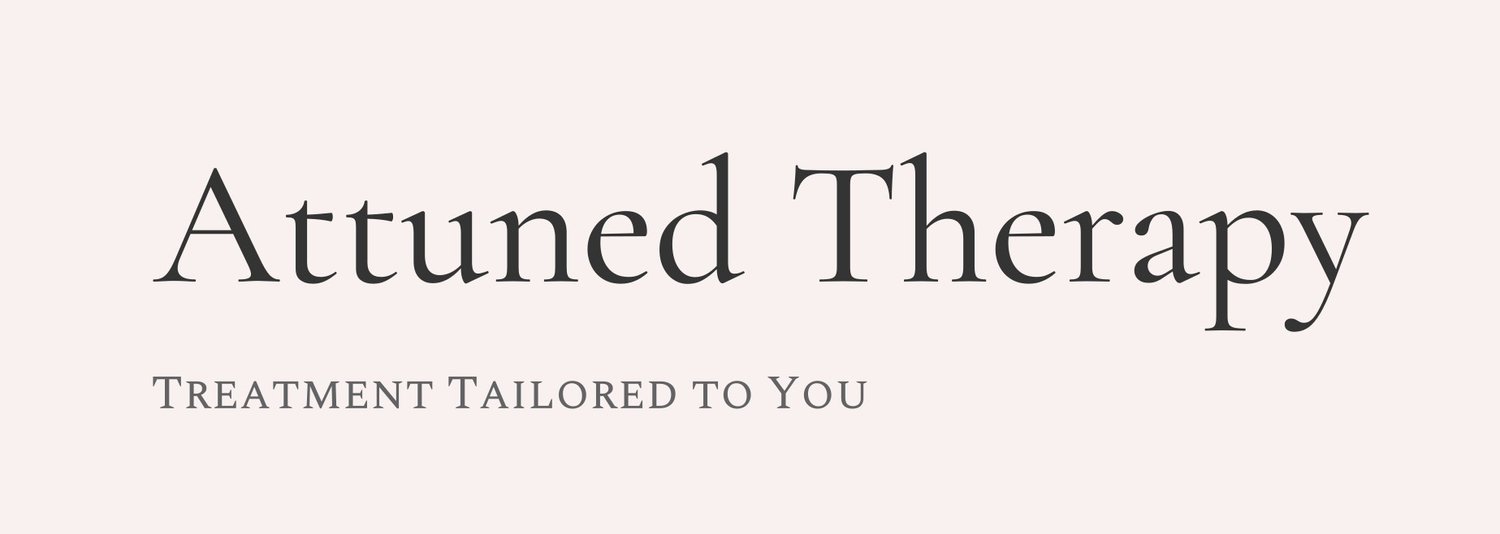Setting Boundaries in Relationships: The Key to Healthy Connections
Relationships, whether romantic, familial, or platonic, thrive on mutual respect, communication, and understanding. One of the most important ways to nurture these qualities is by setting healthy boundaries. Boundaries in relationships are not only a form of self-care, but they also help maintain harmony and respect for each other’s needs and individuality. Without boundaries, a relationship can quickly become toxic, suffocating, or even codependent. In this blog, we’ll explore how setting boundaries can strengthen your connection, the importance of defined boundaries, and how you can effectively set them in your relationship.
Why Boundaries Matter in Relationships
A boundary is a limit or space between you and the other person in a relationship, and it is critical for maintaining your sense of self, individuality, and personal well-being. Without boundaries, relationships can blur into unhealthy dynamics that lead to conflict or feelings of resentment. The idea of "no boundaries" in a relationship can often create a sense of chaos, where one person’s needs are ignored, or both parties feel drained and overwhelmed.
Boundaries meaning: In a nutshell, boundaries are rules or limits that a person sets for themselves and others to define acceptable behaviors and interactions. They serve as emotional, mental, and physical lines that protect your values, needs, and personal space. Setting boundaries is a way of communicating your needs and desires, ensuring you don’t lose yourself in the relationship.
Understanding Boundaries
People often misunderstand boundaries. It’s easy to think you simply say, “This is my boundary,” and the other person respects it. Most of us know that doesn’t work, and yet so many of us still mistakenly believe that’s what setting a boundary means. Boundaries are about what you will do if someone doesn’t respect a line in the sand you have, not what they should do, or what you want them to do.
If you’re boundary is that you won’t date someone who smokes, it means that you will not date someone who does, or that you will walk away from a relationship if someone begins to smoke. It doesn’t mean that you tell them you have that boundary and except them to stop. Boundaries at their core are about backing up your own values by your own action. Boundaries are just words without your own action to back them up.
Boundaries are fundamental for relationship trust and are crucial for building relationship intimacy. If trust is lacking, it's difficult for intimacy to flourish, making it even more important to set healthy boundaries. When boundaries are respected, a relationship can move forward with mutual understanding and love.
How to Set Boundaries
When setting boundaries, it's important to remember that it's not just about expressing what you need from your partner; it’s about defining what you will do if your partner doesn’t respect that boundary. A boundary isn’t truly a boundary without a consequence for when it's crossed.
For example, if you set a boundary around your partner going out late (say, no more than 3 times a month), and they repeatedly exceed that limit, the boundary is about what action you'll take. You could say, "If you go out more than 3 times a month, I’ll need some time alone to recharge because I’m feeling disconnected."
Another option might be, "If this behavior continues, I’ll need to take a step back from spending time together during the week to focus on my own needs." These actions help communicate that your boundaries are about self-respect and maintaining a healthy relationship dynamic, not simply about punishing the other person.
Other forms of action might include limiting certain privileges, like engaging in deeper conversations until the boundary is respected, or even adjusting how much physical connection you give if the behavior continues. The key is to assert your own needs in a way that doesn’t automatically involve walking away from the relationship, but creates real, tangible consequences that protect your well-being and reinforce the boundary.
Types of Boundaries in Relationships
Boundaries come in many forms, and understanding the different types can help you identify where you might need to assert your limits. Take a moment to review this list of various types of boundaries. Perhaps you will connect with some of the ones below. If so, consider where those relationship values come from, and if you’re willing to back them up with action.
1. Physical Boundaries
These involve your personal space, comfort level with touch, and how much physical closeness feels safe. For example, some people may prefer hugs or hand-holding, while others might feel uncomfortable with physical affection in public or at all. Some people are comfortable with rough-housing, where as some people are triggered by aggressive play. Respecting physical boundaries is crucial for maintaining a healthy, comfortable relationship.
2. Emotional Boundaries
Emotional boundaries protect your emotional well-being by defining how much emotional energy you invest in others and how deep the emotions go and when. For example, if one partner is constantly overwhelmed with their emotions, the other might need to set boundaries around how much they can give in a particular moment. Without this, you might find yourself in a codependent relationship, where one person’s emotions dictate the dynamic of the relationship. In another example, you might find yourself in the middle of a trauma dump on a first date. You may not be okay receiving so much heavy information so soon and with a stranger. Emotional boundaries are critical for individuals to identify. If you know your emotional boundaries, you’re that much more likely to be in a healthy relationship, because you’ve steered the ship to get there.
3. Time Boundaries
Time is a valuable resource, and you need to set limits on how much time you dedicate to others versus yourself. Setting boundaries around time can mean saying "no" to invitations or commitments that don't align with your priorities, ensuring you balance relationship needs with personal growth and well-being. Time boundaries are so important to think about because so many people ask or demand our time. If we don’t take the time to sort out where our line is with giving up our energy and time, we are more likely to extend ourselves too often and pay consequences for it.
Sometimes family members ask a lot of us. For some individuals this may be driven by cultural values. It can be hard to sort out what is our value and what is our culture’s value when we also value our culture, but perhaps not the totality of everything about it. Reflecting upon what boundaries you have within your family and to a larger context, your culture, can help you navigate those relationships in a more attuned fashion for yourself. Though, figuring out how to execute boundaries in a larger system can entail it’s own challenges. Working with a therapist can provide clarity so that you can reclaim your time!
4. Sexual Boundaries
These boundaries define how much sexual intimacy is comfortable for both parties as well as what sex acts you are and aren’t willing to try or engage in. For some, sex is a key part of the relationship, while for others, it’s something that needs to be approached with more care, attention, and time. Then there is the vast world of kinks, fetishes, sexual styles, and more that have to be considered.
Not everyone is into choking or anal play, and yet it’s becoming more mainstream to expect as porn infiltrates the minds of young men. No matter what the sex act is, it’s very important for every individual to deeply consider their own boundaries with various sex acts, styles, positions, locations, and more. Doing so, and rehearsing your boundary fosters a sense of trust with yourself, but it also makes you a good sex partner when you know what you want and don’t want and are able to explicitly communicate that.
Being open and clear about relationship and intimacy preferences can help avoid discomfort or resentment later. Too often sexual boundaries go unspoken and someone is on the receiving end of sexual misattunement, or worse, assault and rape. Giving consent requires that we know ourselves; in an ideal universe, anything less than enthusiastic consent is taken as a “no,” but in the world we live in, that’s often not the case.
It’s very easy in the heat of the moment to feel put on the spot, or sometimes, the act isn’t even asked and before you know it, your hair is getting pulled or you’re being asked to bite someone when you don’t want to. By knowing what you do not want and having reflected upon it prior, it’s easier to speak up and communicate that boundary in the moment.
How to Set Boundaries in Early Stages of a Relationship
Defining boundaries early in a relationship helps prevent misunderstandings down the line. Whether you’re dating or becoming more serious, it’s important to define the relationship and communicate openly about what each partner wants. Defining boundaries at this stage creates clear expectations and minimizes the potential for conflict later on. If you have ever felt resentful or bitter about dating someone only to realize down the line they don’t want commitment and never did, I would encourage you to really think about your own boundaries when it comes to dating and the stages of a relationship.
If you find yourself questioning the relationship or wondering how far it should progress, ask yourself what boundaries would help clarify your expectations. Relationship values like communication, respect, and trust can guide how you set these boundaries. For instance, you might set a boundary around how often you want to see each other in the early stages or how frequently you text, ensuring that neither of you feels overwhelmed. Or perhaps you have a boundary that you don’t visit one another’s families for holidays unless you’re officially in a relationship. You get to decide what makes sense for you and you may change boundaries as your life changes.
Being upfront about boundaries around engagement or exclusivity, especially in the context of relationship vs dating, can also help both parties understand where they stand. For example, if you’re not ready to discuss marriage or don’t feel comfortable moving too quickly, it’s crucial to set that boundary early. Conversely, if you are dating only to advance to marriage, then that is important to make known. So often we blame the other person for not following our unspoken dating rules. Even if we take for granted that the way we are dating or our dating expectations are “the norm,” it is still on us, if we failed to communicate our expectations and boundaries.
That said, really, really think about your boundaries when it comes to dating and relationships. Some people prefer to wait to have sex until they’ve been dating for a certain amount of time. Other people have a boundary around emotional/romantic exclusivity after a certain amount of time (i.e. we must not date anyone else, if we’ve been dating two months).
One boundary to you might seem inane and silly to someone else, but for them it’s a critical act of self care. Remember, your boundaries don’t have to work or make sense for everyone. They have to work for you! That means they uphold your value, while also ensuring you still align with others in the dating pool and your boundary does not exclude everyone. Consider what relationship boundaries you have in the various stages of dating and relationships.
Dealing with Pet Peeves and Compatibility
In any relationship, there will be differences, and these can manifest in relationship pet peeves. How you navigate these differences depends on the relationship dynamics and how well you communicate your boundaries. If you’re finding certain behaviors annoying, such as a partner’s habit of leaving dirty dishes around, setting a boundary around cleanliness and shared chores may be the right move.
Some pet peeves, like leaving cabinets open may simply just need to be accepted or tolerated. Understanding the difference between a pet peeve (minor inconvenience), and a dealbreaker, are essential to know what requires a boundary and what doesnt. Remember a boundary is saying: I cannot have this happen, if it does, I will (fill in the blank with course of consequential action).
Compatibility is another area where boundaries come into play. If you and your partner are not aligned on significant issues, like lifestyle choices or relationship deal breakers, it’s important to acknowledge this early on. For example, if one person wants to travel frequently and the other prefers staying home, having a clear conversation about boundaries around how much time will be spent together or apart can prevent feelings of frustration and resentment.
Another example may be how much you prefer you partner to go out and party. For you, you may feel 1-2 times a month is plenty. But what if they prefer to do it multiple times a week? Is it a boundary of yours for them not to do it so often? You know if it is, if you’re willing to take action on it. Are you willing to enforce a consequence as a result?
Boundaries Around Major Relationship Milestones
As your relationship progresses, boundaries around milestones like moving in together or getting engaged become more important. Many couples face differences in values around relationship milestones. Understanding your own values is key to communicating and managing your needs effectively. Our partners are not mind-readers. In the same vein, our value is not THE value, even if we believe we share the same value as the dominant culture. Everyone is entitled to their own values, and we should never take for granted that we share the same timelines or expectations. Relationship stages and milestones can introduce pressure, tension, and even fighting, particularly if you differ on timelines.
Many couples face differences in values around relationship milestones. Understanding your own values is key to communicating and managing your needs effectively.
Engagement and Commitment
The stage of a relationship when you’re thinking about getting engaged or making a lifelong commitment requires you to reflect on your boundaries. You might be clear about relationship and love, but setting boundaries around the timing of engagement is key. If your partner is eager to move forward, but you feel like you need more time, don’t hesitate to set that boundary. For instance, you might say, "I love you and want a future together, but I think we should spend a little more time in this stage of the relationship before making such a big commitment.”
If your partner refuses to provide that time, you might reflect on what your boundary actually is. Does that mean you take a step back? I like to think of all relationships as having an invisible dial. Visualize the dial being numbered 1-10. Perhaps you give 9/10 effort and investment currently, but maybe if your partner keeps pressuring marriage against your wishes, you communicate you will give less of yourself as a result and turn your dial symbolically down to a 7 for the time being to take needed space.
Moving In Together
Moving in together is another relationship milestone that requires boundary-setting. When you live together, boundaries around privacy, chores, and personal space are essential. For example, setting clear expectations around responsibilities, or even how much alone time each person needs, ensures that both partners feel comfortable and respected. It’s also important to establish relationship timelines regarding finances, shared responsibilities, and social life to avoid misunderstandings.
Boundaries are about acting in alignment with your values. They are not meant to be punitive. Instead, they are meant to communicate that you have standards of care for yourself that you commit to uphold. Boundaries require experimentation though. As no two relationships are alike, you may need to play around with the dial to see what feels appropriate as a response.
Relationship Fears and Trust
One of the biggest hurdles in any relationship is the fear of vulnerability. Without trust, it’s difficult to build a connection that feels secure. Relationship fears often stem from past experiences or anxiety about being hurt, and these fears can make it difficult to set clear boundaries. It can lead us to wondering if our boundary is fair or not. Are we truly protecting ourselves, or simply making someone else pay for our relationship baggage?
To avoid a relationship without trust, it’s important to address these fears through open communication. Setting boundaries around the type of communication that feels safe and respecting each other’s need for transparency can help build a stronger, more resilient relationship. A loving and secure partner will listen to your fears and want to make you feel safe. It does not mean they will bend over backwards and adhere to every boundary you wish; but it does mean they will bear your fears in mind.
How to Know When a Relationship is Toxic
It’s important to recognize the signs of a toxic relationship. If your boundaries are being consistently ignored, if you're feeling drained or manipulated, or if there is a lack of respect, these are clear red flags. In these situations, it’s crucial to evaluate whether your boundaries are being respected or if it’s time to walk away. Setting firm boundaries, such as saying, "I’m not okay with being treated this way," with action to support that, is one way to take back control and protect your well-being. Remember, think of your consequential action as existing on the dial. If you are giving an 8 to the relationship right now, what privleges does breaking this boundary take away from them? How do you need to protect yourself or take time?
Toxic relationship signs often involve manipulation, emotional abuse, or codependent relationship behaviors where one partner’s needs are prioritized over the other’s. If you find yourself constantly compromising or feeling unimportant, it may be time to reassess the relationship and seek therapists for relationship issues who specialize in helping people navigate these challenges.
Anxious Attachment and Upholding Boundaries
Many folks with anxious attachment struggle to set boundaries, making themselves ripe for being taken advantage of and even abuse. It’s not uncommon for anxiously attached folks to find themselves in a pattern of dating people who take too much, cross too many of their lines, or even manipulate or emotionally abuse them. But why is this?
Anxiously attached individuals often self-abandon, looking to the relationship/other person to smooth over tensions, rather than self regulate and take space where appropriate. What does this mean? Say for example, a woman with anxious attachment is dating a man who follows a lot of hot influencers on Instagram, who regularly post sexually suggestive images of themselves.
The woman in this relationship may think to herself: “It is my boundary not to date someone who follows a bunch of instagram models.” In reality, she communicates to her boyfriend, “I don’t like that you follow these women on Instagram; it makes me uncomfortable. Can you unfollow them?” He says back, “I don’t see what the big deal is.” They go back and forth until they lose the plot of the conversation and end up yelling at one another.
Now the anxiously attached woman feels worse. She feels disconnected from her partner. Her partner takes space leaving her apartment and not texting. The woman knows her value is that she does not date someone who follows sexually suggestive accounts on Instagram, yet in this moment her desire to maintain her contact with him reigns more important than standing by her own boundary. In this case, she self abandons: she betrays herself on her own boundary to choose instead, the temporary relief of remaining in contact with him. So she texts first and apologizes. He eventually accepts her apology and their relationship continues.
This type of interaction rinses and repeats in relationships like this. In many cases, the woman in the scenario feels like she is the victim, dating someone who is selfish, rude, or hurtful. However, it is her that is at fault for not upholding her own boundary.
Ultimately, there are all kinds of people on this earth, many of whom will shit on your values because they don’t have any of their own, or they simply hold different values for valid reasons. It is our responsibility to manage when, how, and with whom, we extend our time, energy, love, and affection.
Anxiously attacked folks often sacrifice their own self-respect in lieu of remaining in contact with their current attachment figure. Boundaries can be virtually impossible to uphold in a dynamic like this. Help from a licensed therapist can provide guidance and healing from this pattern. Healing from an anxious attachment style and learning to uphold boundaries is 100% possible through commitment and action.
Seeking Help from a Relationship Therapist
If you’re struggling to set or maintain boundaries in your relationship, a therapist can provide support and guidance. Whether you’re dealing with anxiety about relationship compatibility, experiencing difficulty defining your relationship timeline, or struggling with relationship dynamics, therapy can help you build healthier relationships.
Online relationship therapy is a convenient option if you’re looking for flexibility and privacy while working through your relationship issues. With the support of a trained therapist, you can develop tools for setting and respecting boundaries, communicate more effectively with your partner, and create a relationship that aligns with your values.
Learn to Set Boundaries With The Help From A Therapist
Setting boundaries is an essential part of building a healthy, thriving relationship. By recognizing the importance of boundaries in relationships, defining them clearly, and respecting each other’s needs, you can avoid toxic patterns and create a connection built on trust, respect, and love. If you find that setting boundaries is difficult or that your relationship is struggling, seeking help from a therapist can provide the support you need to navigate these challenges and build a healthier, more fulfilling relationship.
If you're struggling to set and maintain healthy boundaries in your relationships, you're not alone. Learning how to communicate your needs and take action when necessary is key to building a fulfilling and balanced connection. If you're feeling stuck or overwhelmed, seeking the support of a therapist can help you navigate these challenges. A therapist can offer guidance, tools, and strategies to help you establish and uphold boundaries that promote respect and trust in your relationships. Don't hesitate to take the next step toward a healthier, more empowered relationship today.
Click here to schedule a Free 15 minute phone consultation to see how therapy can help you work on your boundaries.




